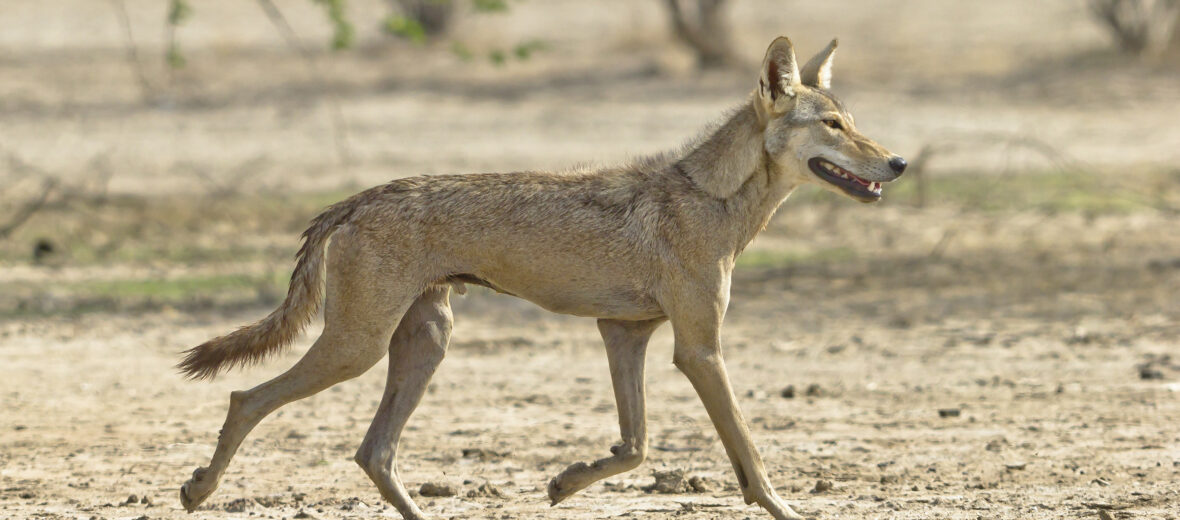
A subspecies of the grey wolf, the Indian wolf can be found in Southwest Asia to the Indian Subcontinent. Their habitats of choice are scrublands, grasslands, and thorn forests. They lack the thick fur coat of the grey wolf, as they live in warmer climates and don’t have the need for dense fur coats or even much of an undercoat. They do have longer hair on their backs, which is thought to be an evolutionary trait to protect them from the sun’s UV rays. Due to habitat loss and hunting these wolves are listed as Endangered by the IUCN.
First the Stats…
Scientific name: Canis lupus pallipes
Weight: Up to 55 lbs.
Length: Up to 4.75 feet, including tail
Height: 2 feet 4 inches, at the shoulder
Lifespan: Up to 13 years
Now on to the Facts!
1.) Indian wolves usually live in smaller packs of around 6 – 8 individuals.
2.) They have a nocturnal (active at night) and sometimes crepuscular (active at dawn and dusk) lifestyle which helps them stay out of the heat.
3.) Their primary prey items are blackbuck antelopes, rodents, sambar deer, and raccoons.
4.) Similar hunting tactics to the grey wolf are shared by the Indian wolf. They chase their prey into ravines, into the jaws of other ambushing wolves, and even use decoys like rolling on their backs and distracting their prey while other wolves attack.
5.) Indian wolves also come into conflict with humans when their natural food source is scarce, as they will hunt livestock.
But wait, there’s more on the Indian wolf!
6.) In Iranian culture, children are sometimes warned not to misbehave for fear of meeting with an Indian wolf and the fate therein. A little harsh, don’t you think?
7.) The Indian wolf is monogamous (mates for life).
Did you know…?
In a phenomenon called “child-lifting”, Indian wolves will actually actively prey on children.
8.) Females birth 5 – 6 pups after up to a 75 day gestation (pregnancy).
Now a Short Indian Wolf Video!
Also, check out the Critter Science YouTube channel. Videos added frequently!
Want to suggest a critter for me to write about? Let me know here.



